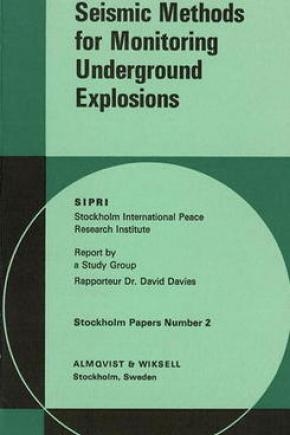Seismic Methods for Monitoring Underground Explosions
Leading seismologists from ten countries including four nuclear powers present a fresh assessment of the state of the art of seismic detection and identification of underground nuclear explosions, a subject of importance for any future negotiation of a comprehensive test ban.
In the United Nations' General Assembly, a summary of the report was welcomed and praised by the delegates of many nations.
Introduction: A seismological outline
I. The detection and location of seismic events
II. The discrimination of earthquakes and explosions
III. Conclusions that may be drawn from seismological work, and other topics
Appendix 1. Seismologically important nuclear explosions
Appendix 2. Decoupling
Appendix 3. Amplitude/yield relationships
Appendix 4. The magnitude problem
Appendix 5. Complexity
Appendix 6. Possible uses of decision theory in underground test ban control
Appendix 7. Some studies of the capability of a 44 station network
Appendix 8. Historical note

